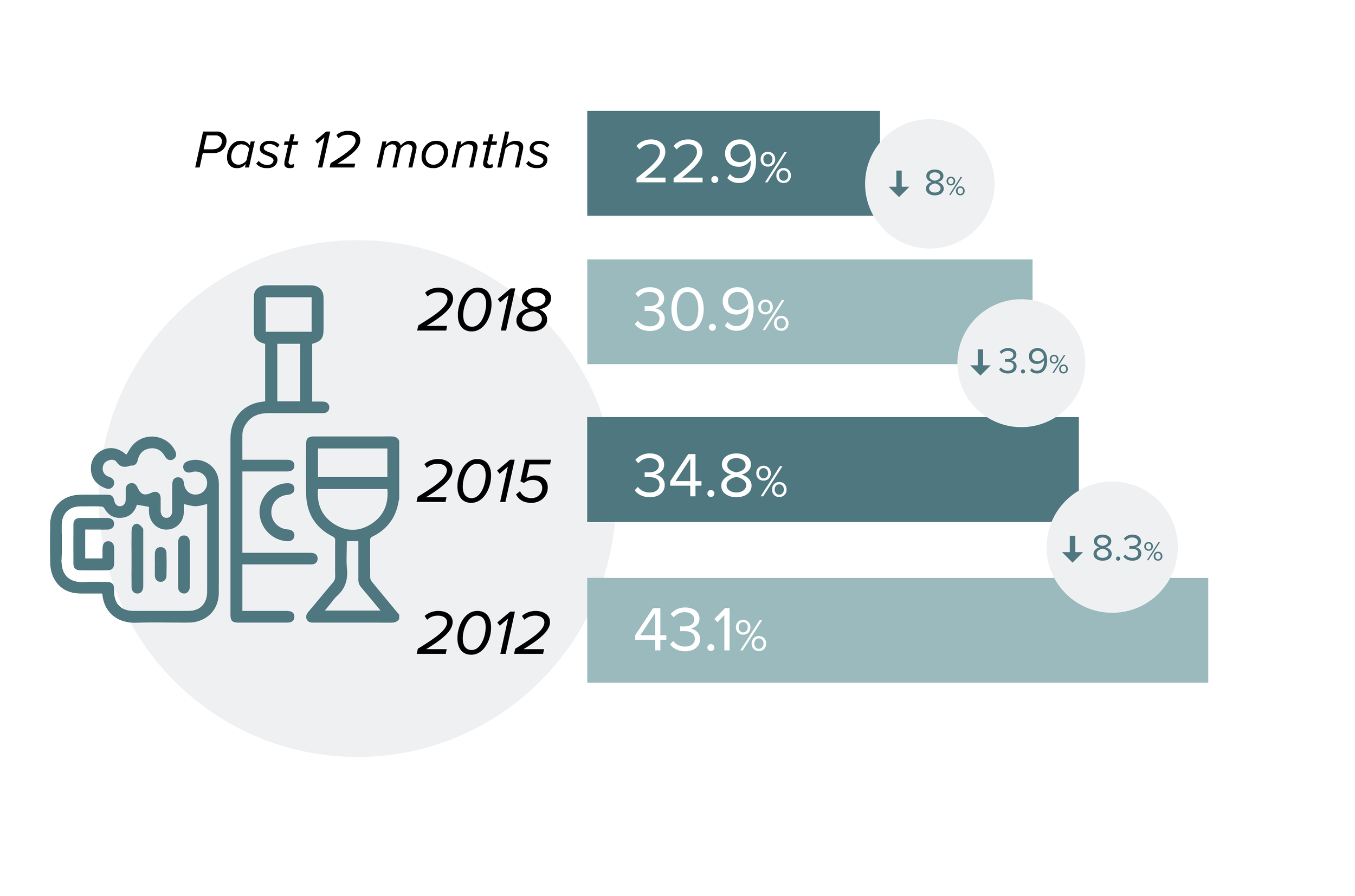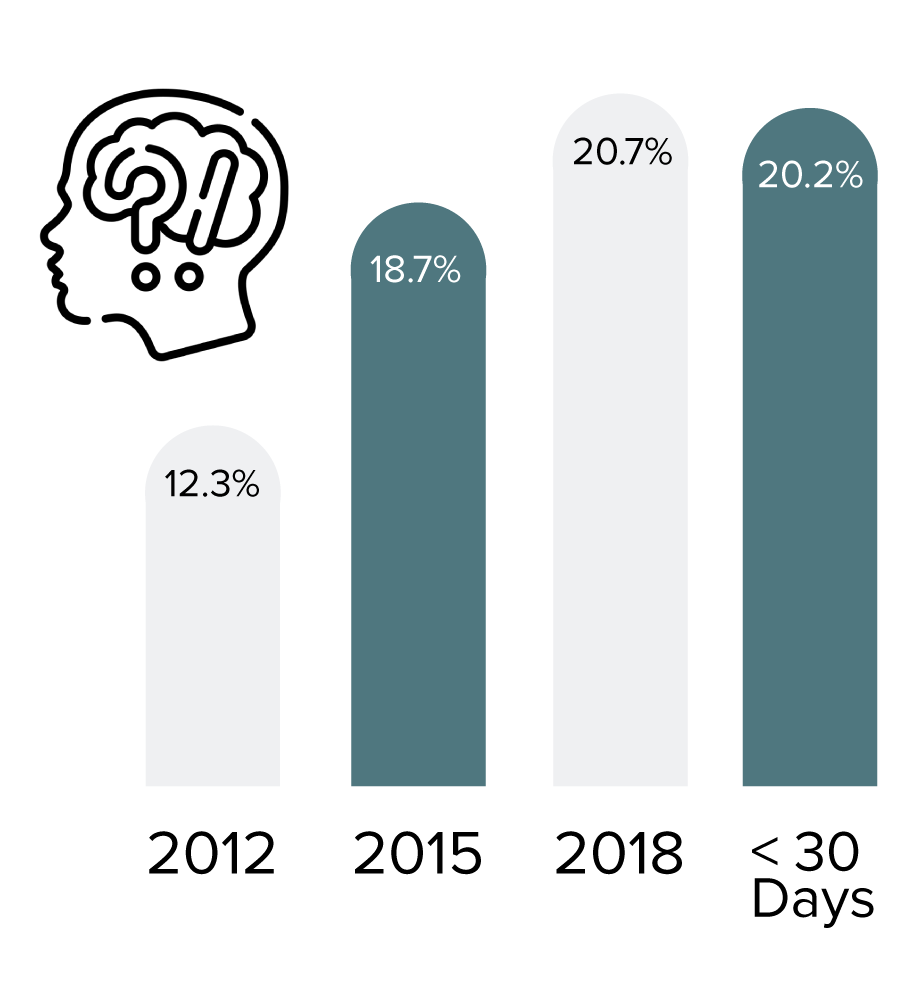
Youth Data
What the data is showing about our children
The Dane County Youth Commission released the results from the 2021 Dane County Youth Survey, which was administered between January 15 through April 15, 2021. The assessment, administered every three years to keep pace with youth trends, shows encouraging declines in high school alcohol use, however, troubling increases in emotional health issues persist. Behaviors that typically involve students congregating or socializing face-to-face (like alcohol use or sexual behavior) were down. Unfortunately, emotional health topics related to stress and worry (struggling with homework, depression) were higher. However, we should be careful in interpreting these 2021 results as the beginning of new trends. Many behaviors may return to the past levels once students return to school and resume past behavior patterns.
This year, more than 26,993 students in 19 school districts and one private high school completed the survey. The DCYA asks 7–12th grade youth about their attitudes, behaviors and experiences across life domains to provide educators, policy-makers and funding bodies data to inform grant writing, program development and public policy.
The survey includes topics related to health and nutrition, alcohol and other drug use, emotional and mental health, sexual activity and knowledge, bullying experience, out-of-school time activities, employment and many other risk and positive behaviors engaged in by youth in the Dane County community.
Positive youth trends include:
High school youth report a decline in alcohol use
Less than 1% of high school youth report smoking cigarettes in the past 30 days compared to 3% in 2018 and 7% in 2015.
Views on alcohol, marijuana, and prescription meds
High school seniors report that the top three sources where they get alcohol from include: my parents, get it at parties with friends and someone else buys it for me
Have you ever driven a car under the influence of alcohol or drugs 10% of Seniors reported yes, while 5% of Juniors responded yes.
24% of Seniors are reporting using marijuana in the past 12 months, while 19% of Juniors, 12% of Sophomores and 6% of Freshman
When taking into account our recent epidemic with prescription drug and heroin misuse, and whether prescription medications in the home are locked up, here is what students report:
61% of Seniors, 58% of Juniors, 55% of Sophomores and 53% of Freshman all replied in the survey that prescription drugs are kept in a place I can access, like the bathroom cabinet or kitchen counter
Parental influence
Pertaining to the question on the survey, “How wrong do your parents feel it is for you to…?
of high school students know that their parents feel it ist very wrong for them to use marijuana
of high school students know that their parents feel it is very wrong for them to use tobacco
of all high school students know that their parents feel it is very wrong for them to use alcohol
However, when you look at just Seniors, only 24% believe their parents feel it is very wrong for them to use alcohol
Use of e-cigarettes
An emerging issue raising concern is the use of e-cigarettes by Dane County high school youth:
7.6% of all high school students reported use of a vapor electronic cigarette in the last 30 days (compared to 19% in 2018)
47% of high school youth believe there is “great risk” to e-cigarette use daily, compared to 43% of high school youth who perceive “great risk” using an e-cigarette or vaping products with THC daily
According to the Surgeon General, there is evidence showing that young people who use e-cigarette products are more likely to switch to regular cigarettes in the future
Emotional health
Among the troublesome news, we cannot ignore the persistent emotional health concerns that our youth report struggling with, particularly among young women, LGBTQ+ and low-income youth.
In 2021, youth report increased rates of anxiety and suicidal thoughts as compared to previous surveys. High school females, youth who identify as Lesbian, Gay, Bi-Sexual or Questioning their sexual orientation (LGBTQ+) and youth living in low-income households report higher incidences of emotional health issues when compared to their peers.
Responding to survey questions about persistent worrying, feeling on edge or anxious and that problems felt so high they could not be handled:
32.3% of high school youth report feeling anxious
53% of high school females compared to 23% of high school males report feeling anxious often or always
Youth who identify as gay or lesbian (77.5%) report higher levels of anxiety compared to youth who identify as heterosexual (44.1%)
Low-income youth report more anxiety (65.8%) compared to higher-income peers (33.1%)
Suicidal ideation
13.9% of high school youth who identify as straight/heterosexual report they have thought seriously about killing themselves in the past 12 months compared to 38.7% gay/lesbian, 46.7% bi-sexual and 35.1% of youth questioning their sexual orientation.
27.4% 9th-12th grade females report having suicidal thoughts as do 25.9% of 7th – 8th grade females. This is largely unchanged, compared to 2018 reports of 27.6% and 25.1% respectively.
Lower income high school youth report a higher rate of suicidal thoughts (41.9%) than their more affluent peers (16.3%).
20.2% of all 7th-12th grade youth report having suicidal thoughts (ideation) during the past 30 days. This compares to 2018 at 20.7%, 2015 at 18.7% and 2012 at 12.3%.
Reported depression, defined as sustained sadness that interfered with their activities in the past 12 months:
29.2% of all 7th-12th grade youth responded affirmatively to this question compared to 23.5% in 2018, 21.7% in 2015 and 19.4% in 2012.
Reported rates of depression are higher for high school females (44%), youth who identify as gay or lesbian (58.2%), and low-income youth (63.1%).









